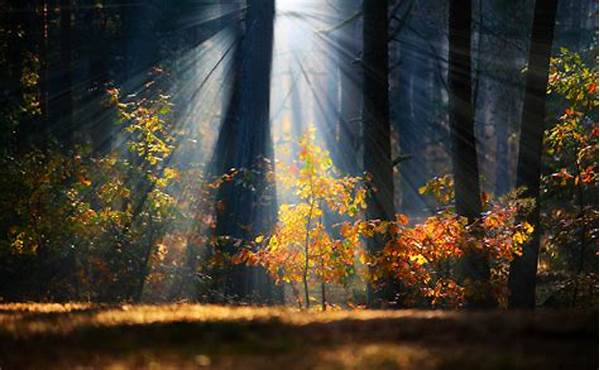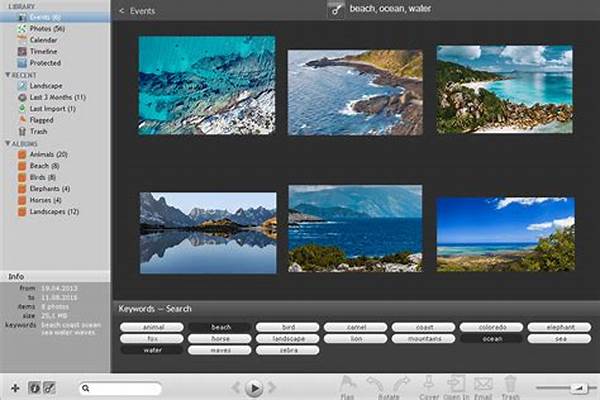Hey there, fellow shutterbugs! Capturing the beauty of a forest with just natural light can be one of the most rewarding challenges for a photographer. Imagine the way sunlight breaks through the leaves, creating patterns and shadows that transform the woods into a magical wonderland. Today, we’ll dive into some awesome tips and tricks to master natural light forest photography techniques. So, grab your camera, lace up those boots, and let’s wander into the greenery together!
Read Now : Capturing Dynamic Street Light Contrasts
Mastering Light and Shadows
When it comes to natural light forest photography techniques, understanding light and shadows is key. Forests are full of contrasts—light filtering through the canopy creates a beautiful interplay of dark and bright areas. The trick is to use those contrasts to your advantage. Start by shooting during the golden hours—early morning and late afternoon—when the sunlight is softer and warmer. This is when the forest comes alive with colors, casting gentle shadows that add depth to your photos.
Don’t forget to play around with silhouettes and backlighting. Position yourself so that the sun is directly behind your subject, creating a dramatic outline against a warm, glowing backdrop. This technique adds a sense of mystery and can highlight the shape and form of trees and foliage. Also, keep an eye out for foggy mornings—mist can soften the light, lending an ethereal quality to your images, perfect for creating atmospheric shots.
An essential part of natural light forest photography techniques is experimenting with different angles and perspectives. Get low to the ground to capture the towering majesty of trees or shoot upwards to highlight the texture and patterns of leaves against the sky. Remember, the forest offers endless opportunities, so don’t be afraid to explore and try new compositions.
Quick Tips for Forest Photography
1. Golden Hour Magic: Use morning or late afternoon light for soft, warm tones that enhance forest scenes.
2. Silhouette Strategy: Capture dramatic silhouettes by shooting subjects against the light source.
3. Foggy Fun: Embrace misty mornings for atmospheric, ethereal images.
4. Groundwork: Experiment by shooting from low angles to emphasize the height of trees.
5. Skyward Shots: Point your camera up to capture unique leaf textures and sky contrasts.
Tips on Camera Settings
Nailing those natural light forest photography techniques often begins with your camera settings. A good place to start is with a low ISO setting to maintain image quality, as forest environments are usually well-lit with natural ambient light. Aperture settings around f/8-f/11 work well to get a good depth of field, allowing both the foreground and background to be in focus, which is perfect for capturing the detailed environment of a forest.
Shutter speed can be a bit tricky, though. While a faster shutter speed will help freeze motion, such as leaves blowing in the wind, a slower shutter speed can be ideal for capturing more light, especially under a dense canopy. Using a tripod can really help here, especially to avoid hand-shake blur. If you’re feeling adventurous, experiment with exposure bracketing to merge different exposures in post-processing, allowing for a perfectly balanced image that captures the dynamic range of the scene.
Composition Techniques
1. Rule of Thirds: Position main elements along grid lines for balanced shots.
2. Leading Lines: Use natural pathways or streams to guide the viewer’s eye through the photo.
3. Framing: Surround your subject with natural elements like foliage for a focused look.
4. Negative Space: Incorporate empty areas to emphasize your main subject.
Read Now : Computational Photography Advancements Mobile
5. Diagonal Lines: Create dynamic tension by aligning elements along diagonal paths.
6. Symmetry and Patterns: Highlight the ordered beauty amidst the natural chaos of forests.
7. Reflections: Capture mirrored images in lakes or puddles for artistic flair.
8. Texture and Details: Zoom in on intricate bark, leaves, or fungi.
9. Color Pop: Look for contrasting colors to make elements stand out.
10. Background Blur: Use bokeh to highlight subjects against a soft, blurred backdrop.
Creative Approaches to Forest Photography
Getting creative with natural light forest photography techniques is where the fun truly begins. One idea is to carry a prism or a reflective object with you, using it to bend and reflect light creatively within your shots. It can add unexpected and intriguing light flares or rainbows in your image—perfect for those enchanted forest vibes.
Another approach is to use long exposure techniques during the day to create dreamy, blurry effects with moving elements like clouds or flowing water. Combine this with a neutral density (ND) filter to manage the amount of light that hits your lens, so you can keep the shutter open longer without overexposing your image. With some creativity and a willingness to experiment, you can push the boundaries of conventional forest photography, producing stunning and unique images that capture the forest’s spirit.
Keeping It Real with Slang
Yo, if you’re diving into the world of natural light forest photography techniques, you’re in for a treat! It’s all about that killer vibe you can’t get enough of. We’re talking about catching those dope rays piercing through the leaves like beams straight outta a fairytale. You don’t even need to act all pro with the fancy gear—just you, your trusty camera, and an eye for those epic moments.
So next time you’re out and about, don’t just click randomly. Peep the light, spot how it dances among the branches. It’s like forest magic that doesn’t need any filters to stay lit. And remember, every shot tells a story—make sure yours says exactly what you want it to. Ain’t no need to stress, just go with the flow and let those natural light forest photography techniques do their thing!
Wrapping Up the Adventure
To wrap up our journey into natural light forest photography techniques, remember that practice makes perfect. Every forest visit presents a fresh slate to try something new. The natural world is constantly changing; so should your approach to capturing it. By experimenting with light and composition, you’ll find your style while possibly stumbling into some happy accidents along the way.
Just keep clicking and don’t be afraid to step out of your comfort zone. In the quest for the perfect shot, embracing spontaneity can lead to some of your most memorable photos. Keep your eyes and mind open—you never know what hidden gems you might uncover on your next forest hike. Enjoy the process, and let your creativity be as wild and free as the woods themselves!



